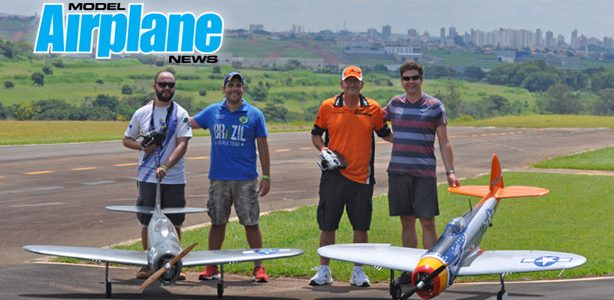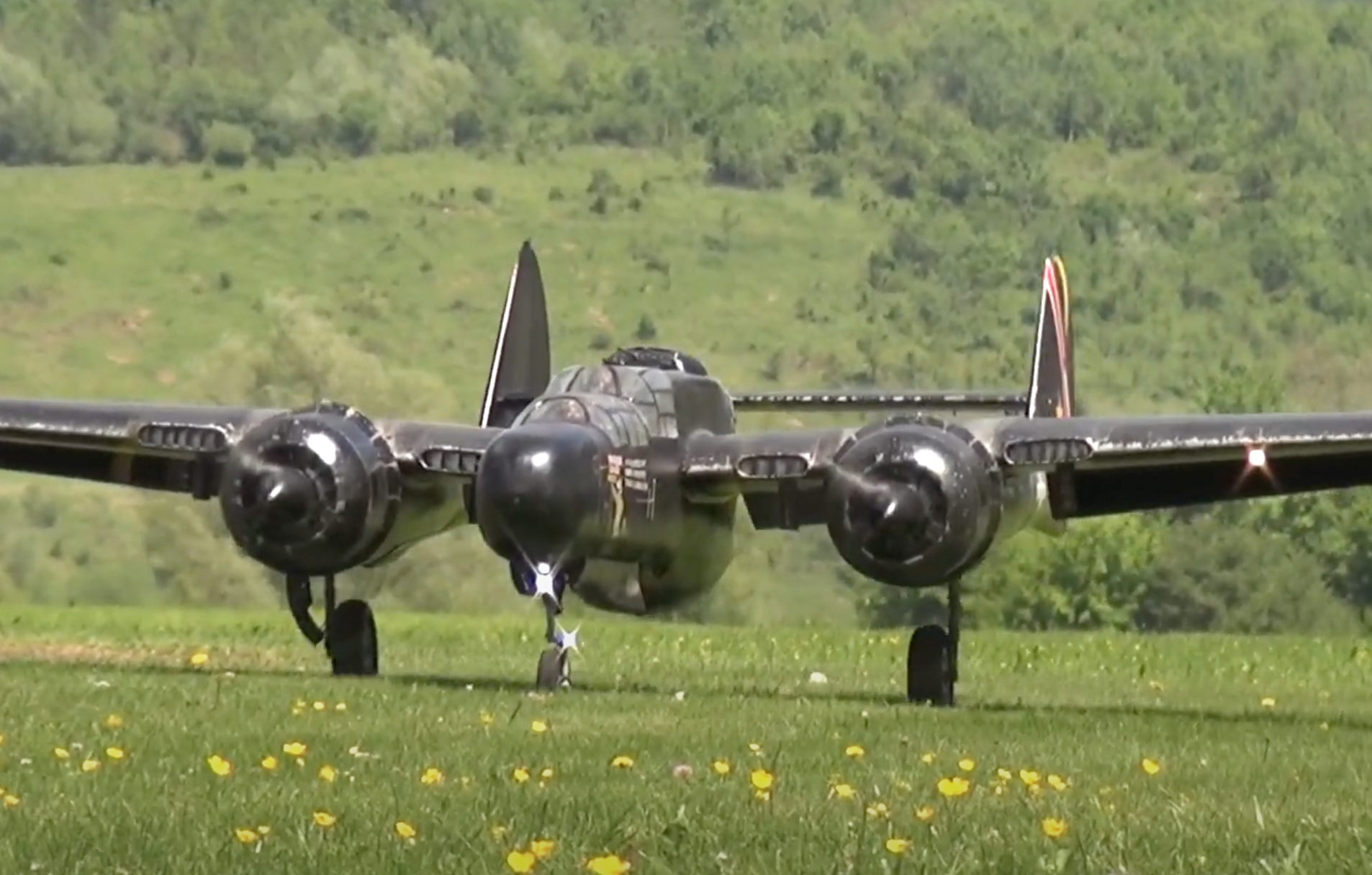Avoid collisions with this impressive coaxial heli
There are two things that stand out about the new Evolve 300 CX coaxial helicopter from Innovative Flight Technologies (IFT) — its size and innovative on-board Collision Avoidance Technology (CAT). Well, actually, there are other impressive features, but these two really grab your attention. Loosely styled after the Eurocopter AS350 Ecureuil, the Evolve 300 CX is much bigger than your typical indoor micro coaxial heli and is available in Ready-to-Fly (RTF) and Ready-for-Receiver (RFR) versions. The RFR version comes ready for you to install a receiver so you can use your own transmitter. This review is based upon the RTF version that includes everything you’ll need to fly—straight out of the box.
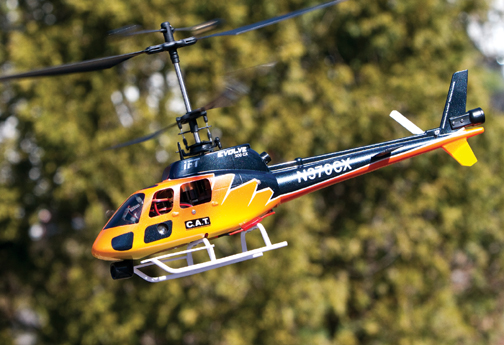
Specifications
- Model: Evolve 300 CX RTF
- Type: Coaxial heli
- Manufacturer: Innovative Flight Technologies (IFT)/Firelands Group (iftrc.com)
- Distributor: HobbyTown USA (hobbytown.com)
- Main rotor dia.: 18 in.
- Length: 18.3 in.
- Height: 10.4 in.
- Ready-to-fly weight: 16 oz.
- Motors: 2x brushed 370 size
- Radio req’d.: 5-channel (included with RTF; required with RFR)
- Price: $219.99 (RTF); $149.99 (RFR)
Highlights
- ⊕ Excellent stability
- ⊕ Can be flown indoors and outdoors
- ⊕ Collision Avoidance System
Gear Used
- Radio: IFT MP5H 5-channel 2.4GHz transmitter (included)
- Servos: 2 x 7.5-gram digital sub-micro (included)
- Battery: IFT 20C (16A) 800mAh 3S 11.1V LiPo (included)
- Charger: IFT 3S 11.1V 0.8-amp DC Balancing Charger (included)
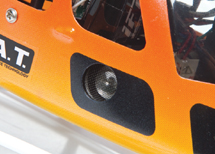
There are two CAT sensors on the sides of the heli. Remember, you should not add any decals or markings that would cover up the sensors.
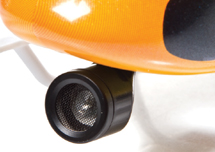
Under the nose is another CAT sensor and it looks like a scale search light. There is another sensor mounted in the end of the tail boom.
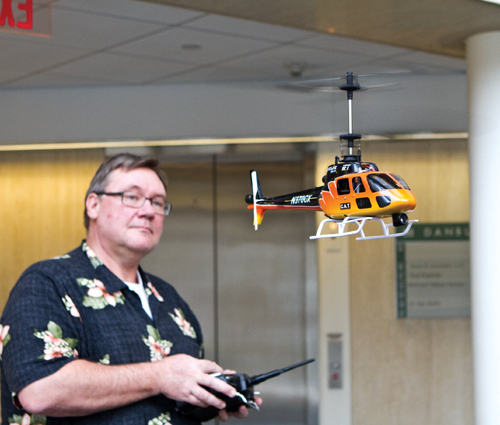
Flying the Evolve is a piece of cake—even within the confines of the Model Airplane News editorial office! For precise hovering in very tight spaces, it’s best to switch the CAT system model to Low and rely more on your piloting skills.
UNIQUE FEATURES
The Evolve 300 CX RTF is a very complete package. It comes with AA batteries for the 5-channel 2.4GHz transmitter and a 6-channel receiver (already installed), a spare set of rotor blades, a 800mAh 3S 11.1V LiPo battery, a fairly thick instruction manual and a DC balancing charger with an AC adapter. There’s nothing else required to get airborne. The factory-installed CAT module and ultrasonic sensors plus an advanced 3-in-1 control unit and 7.5-gram digital sub-micro servos also come installed and ready to go.
The helicopter’s body is made from sturdy lightweight molded plastic and is connected to the main frame with screws inserted into flexible tubing attached to the frame. This provides a little give to prevent cracking of the body attachment points. The DC charger is easy to use and has two LED indicators. The charger is powered and ready to charge when it flashes red. You connect the white balancing connector to the charger and then red and green will remain solid during charge. When it is no longer green, the charge is complete. If it starts flashing red and green, there is a charging fault. The charger’s putout is 0.8A.
In the Air
Before each flight, you must turn the transmitter on before connecting the flight battery to the on-board control unit. The throttle stick and throttle trim level should be set to the lowest setting for the control unit to initialize and arm properly. Switch the transmitter on and wait for the transmitter’s red LED indicator to flash rapidly and then remain solidly lit. Place the heli on a flat, level surface and connect the flight battery. Wait for the control unit’s LEDs to flash red three times and then green three times. It will glow solidly green to indicate it has been properly initialized and armed for flight.
GENERAL FLIGHT PERFORMANCE
- Stability: The Evolve 300 CX has excellent stability and with the test model, the mixer/gyro pot adjustments were right on the money. The heli lifted off and the nose never drifted off heading. It demonstrated “hands-off” stability (with low rates) even when the throttle is advanced or reduced slightly to control altitude.
- Control response: Evolve 300 CX has a nice feel and it responds nicely both at high- and low-rate settings. Because of its inherent stability, it does take a little “push” of the controls to initiate forward flight. However, it tracks nicely and you can easily execute figure-8s within a confined area. Straight out of the box, the rotor blade tracking was near perfect and no adjustments were required.
- CAT System: It was fun to play with the Collision Avoidance Technology system and I tested it in an area of about 20×20 feet square. I put the Evolve into a hover and then just let it drift about. As it approached a wall, you could clearly see the system “nudge” the cyclic control to “push” the heli away from the wall. I also tried it with the nose and tail pointing to the wall as well as with the side facing the obstruction. Every time, the heli was moved to a safer position away from the wall. Pretty cool!
PILOT DEBRIEFING
I also hovered and flew the Evolve outside in calm wind conditions. I felt that it had plenty of mass for excellent stability should a small gust try to push it off course. With the CAT system turned off, you can fly at will and the heli remains very pilot friendly for beginner and experienced pilots alike. The instructions do mention a shorter (optional) stabilizer flybar (IFLH1319X) that you can use to increase the Evolve’s control response. I do not recommend flying the Evolve in gusty conditions or when there is a wind above 10mph. There is only so much control available and the wind can over-power the cyclic controls. In calm conditions, this heli is a blast to fly.
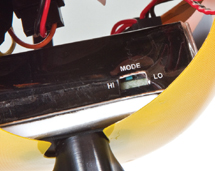
The Hi/Low mode switch for the CAT system is accessible through an opening in the bottom of the fuselage. Hi responds quicker with a longer range and Low is for a slower response with a shorter range.
The nicely made IFT 5-channel MP5H transmitter is 2.4GHz and features mechanical trim levers, a dual rate switch, and a gear switch. Four AA batteries are also included for the transmitter and there is a digital voltage display at the top of the transmitter case. On the lower right is a small hatch cover under which is four servo reversing switches (for the primary controls) and a gear select switch for normal/slow.
The gear switch at the top left is used to switch the CAT system on/off and can be activated before and during flight. Flipping the gear switch so it is pointing away from you turns the CAT system off. The dual rate switch (top right) controls the settings for both aileron and elevator control.
COLLISION AVOIDANCE SYSTEM
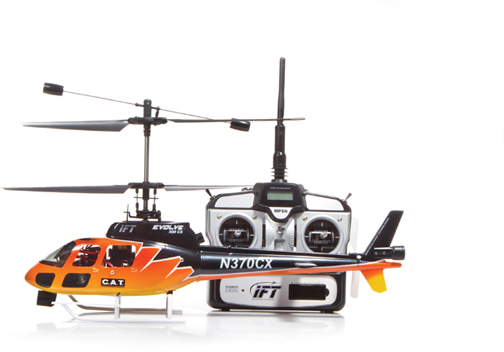
The Ready to Fly version comes with everything needed to fly including a 2.4GHz transmitter. Not shown here are the LiPo battery pack, charger, and spare rotor blades.
This is the first RC helicopter I have flown that has this feature. Using ultrasonic sensors and advanced software, the IFT-exclusive Collision Avoidance Technology (CAT) automatically commands the 300 CX to avoid collisions with walls and furniture. There are four sensors with one at the front, back, and each side of the helicopter. The sensors measures the distance to an object so the control system can apply inputs to avoid a collision. According to the instructions, the system generates sound waves in the 40KHz range and it suggests not flying the helicopter around pets and dogs who may be disturbed by the high-frequency sound. This is a great feature to help the first-time pilot flying in smaller indoor spaces to prevent crashes and damage. It is also not recommended to fly through doors or other narrow areas with the CAT system turned on.
The Evolve 300 CX is equipped with a 3-in-1 control unit that combines the functions of two ESCs, a mixer, and a gyro. The unit also has gyro gain and mixer adjustment pots. These are set at the factory and should not require adjustments. If, however, you find that the nose of the heli constantly wants to turn in one direction or the other, you can remove the unit and make a mechanical adjustment. The instructions explain the process in detail.
The Flying Squirrel
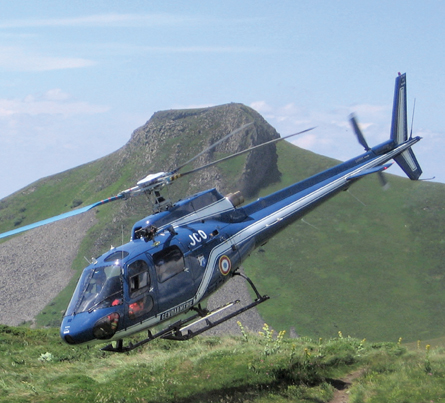
Eurocopter AS350 Ecureuil (Squirrel) is a single-engined light helicopter originally manufactured by Aérospatiale, (now part of Eurocopter). Developed in the 1970s to replace the Aérospatiale Alouette II, the AS350 went into service in 1975. The Ecureuil has become extremely popular in both Europe and the United States as a rescue helicopter. Several versions including a twin-engine version can be seen performing military, firefighting, and EMT “Life Star” accident patient evacuation roles. An Ecureuil AS350B3 was used to set rotorcraft world records, for highest of both landing and take-off. On May 14, 2005, pilot Didier Delsalle landed his Ecureuil at an altitude of 8,848 meters (28,756 ft.) on the top of the Mount Everest. The Fédération Aéronautique Internationale (FAI) required the aircraft remained on the summit for longer than two minutes before returning to Lukla. Didier actually landed on the summit twice and stayed at the summit for about four minutes twice.
Specifications
- Crew: 1
- Capacity: 5
- Rotor dia.: 35 ft., 1 in.
- Length: 35 ft., 10.5 in.
- Height: 10 ft., 3.5 in.
- Max. weight: 4,960 lb.
- Powerplant: One, 850hp Turbomeca Arriel 2B turboshaft



